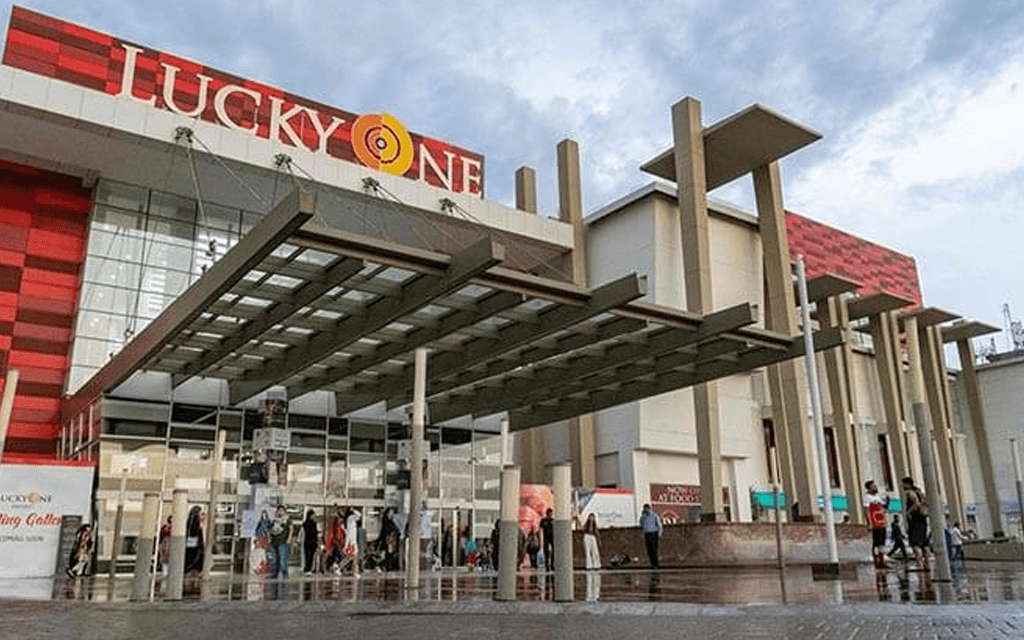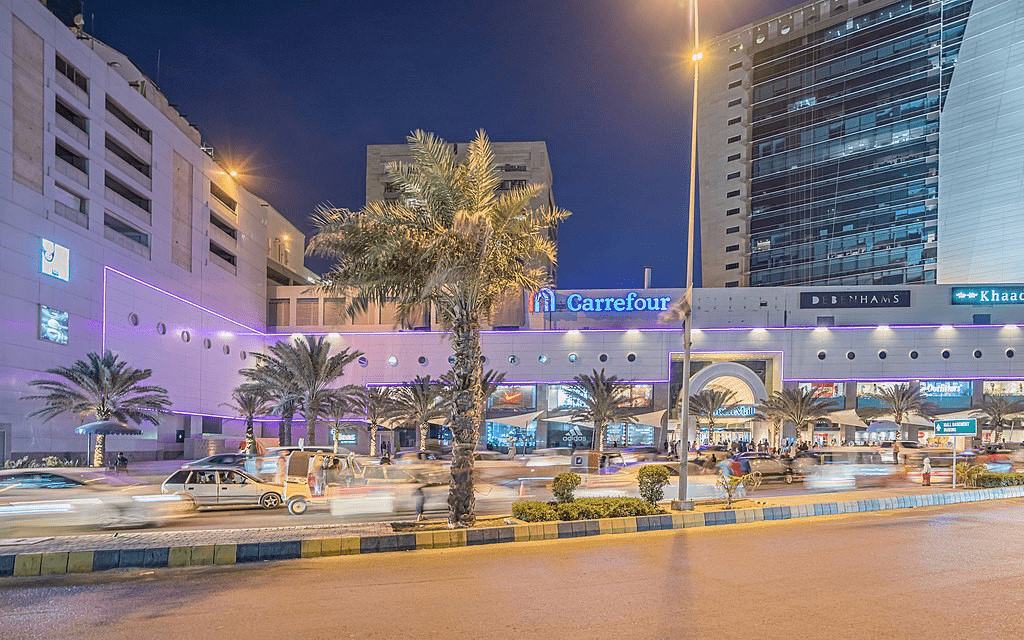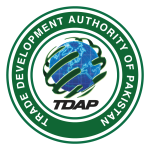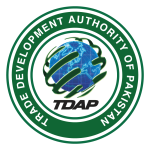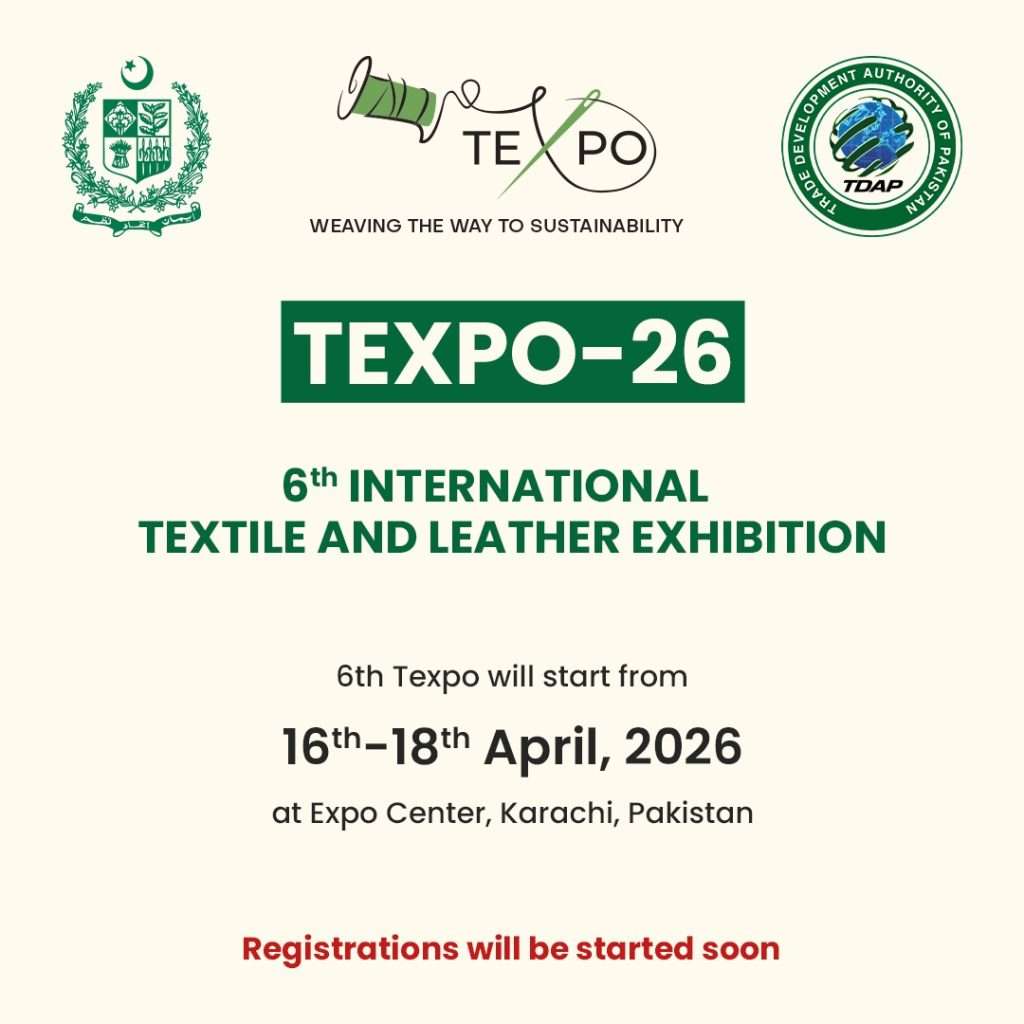KARACHI
Karachi, the noisy, bustling, ever-growing troubled metropolis of Pakistan, lies on the eastern coast of the Arabian Sea, just northwest of the Indus river delta. The largest city, and unarguably the most important, Karachi was the original capital of the nation. The sprawling huge metropolis has grown into the commercial, transport and political hub of the country, and operates the largest and busiest ports in the country. The growth rate of the city propels it forward onto the global stage and Karachi is on its way to becoming a massively influential player.
Karachi offers a remarkable variety of attractions and activities – from sunny, sandy beaches and scurf-infested old colonial buildings, still preserved and in some cases inhabited, to traditional bazaars and modern shopping malls. Upscale luxury hotels overlook modish restaurants with flavors from all over the nation and much of the world. They make the city a hot¬spot for local and tourist activity.The city is known as the "City of the Quaid" because the founder of Pakistan, Muhammad Ali Jinnah, was born, raised and spent his last years here. Additionally due to its round-the-clock liveliness, Karachi is now more popularly and affectionately referred to as the "City of Lights".
Karachi has a relatively mild and an arid climate — albeit a moderate version of this climate — pretty much throughout the year because the city rests on the coast. Karachi has two main seasons; summer and winter, while spring and autumn are very short. The city enjoys a tropical climate encompassing warm and humid summers while the mild and dry winters; the proximity to the sea maintains humidity levels at a near-constant high and cool sea breezes relieve the heat of the summer months however summer season persists for longest period during the year. Due to the high temperatures during the summer (ranging from 30-44°C from April to October), the winter season that last from November to March, are the best times to visit Karachi. Most rainfall occurs during the rainy season of monsoon occurs in Summer from July to August, occasionally featuring lengthy spells of continuous rain. The highest ever recorded temperature in Karachi is 47.8°C while the lowest is 0°C.
PLACES TO VISIT IN KARACHI
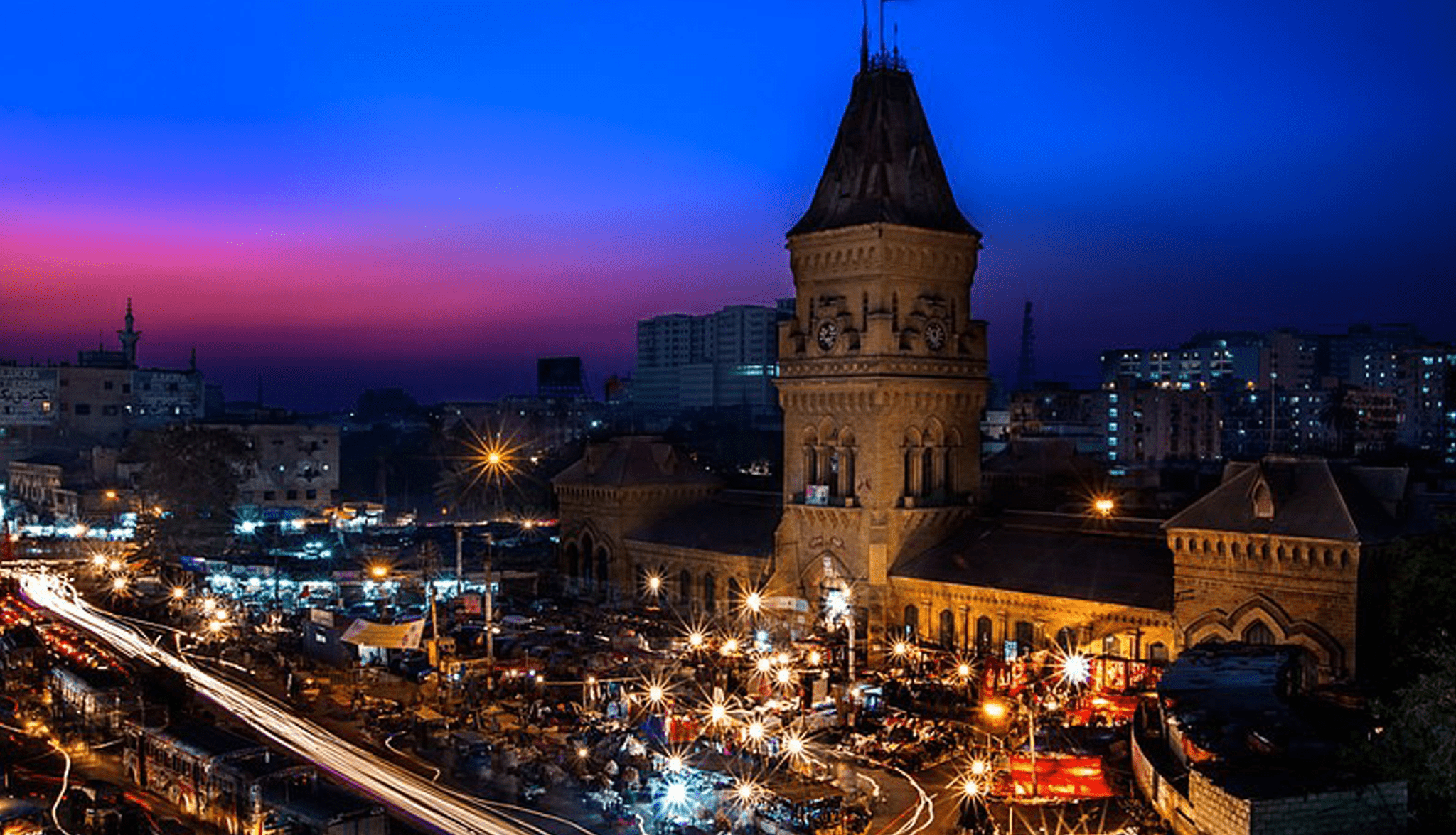
Empress Market
A famous marketplace dominated by a Gothic-Mughal-style clock-tower of the colonial era, situated in Saddar, which is one of the most congested and busiest areas of Karachi. The market is one of the most important landmarks of the city and traces its origins to the British Raj era, when it was constructed in 1889 and named "Empress Market" to commemorate Queen Victoria, the Empress of India during late 19th century. Today, it is amongst the most popular, oldest and busiest places for shopping in Karachi and one of the few historical spots of the city.
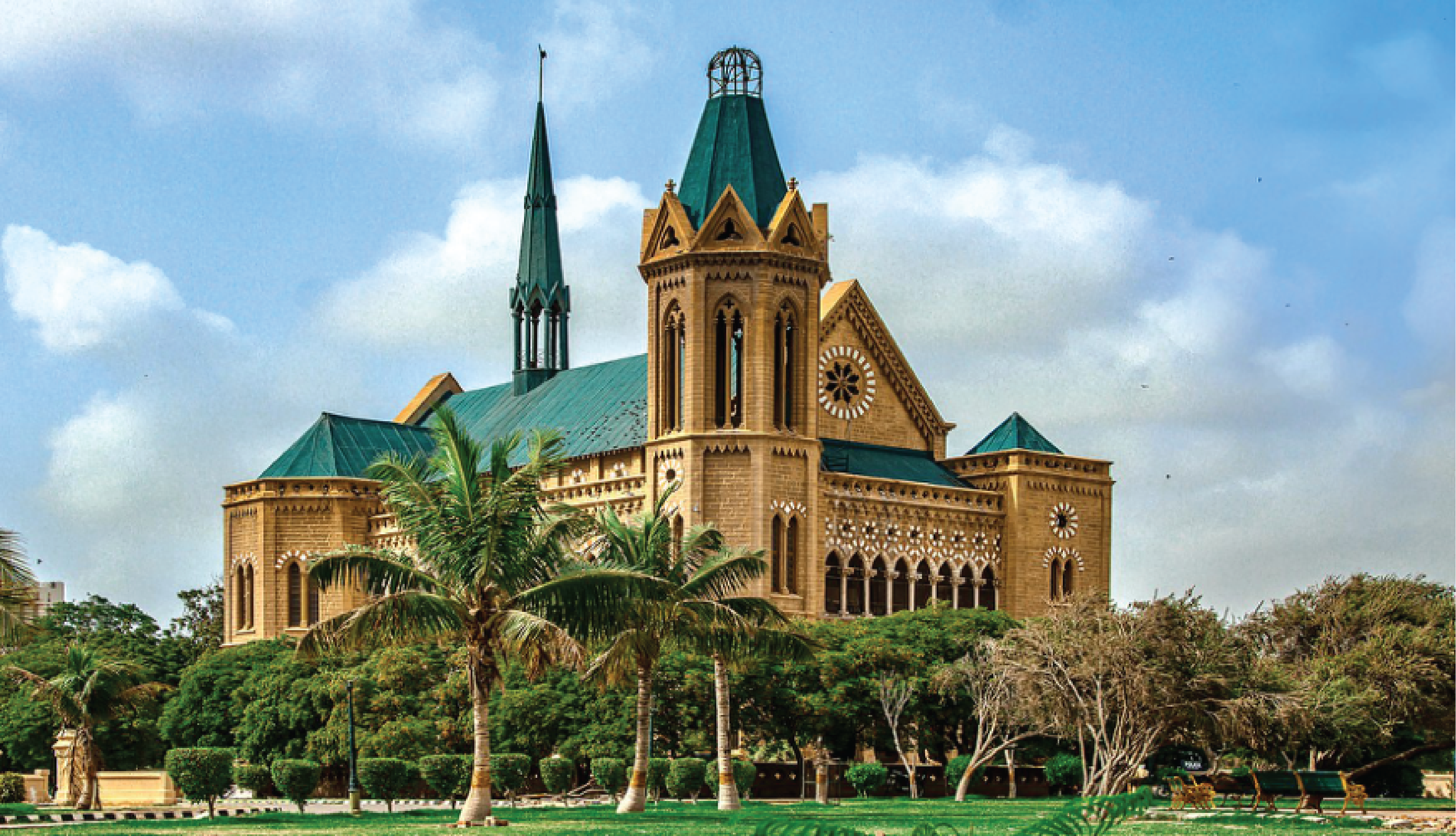
Frere Hall
Frere Hall is a building in Karachi, Pakistan that dates back to the early British colonial era in Sindh. Completed in 1865, Frere Hall was originally intended to serve as Karachi's town hall, and now serves as an exhibition space and library. The main building built in the Venetian Gothic style with yellowish Karachi limestone and red and grey sandstone located in the middle of the two beautiful, large and lush green lawns extends to the road.

The Chaukhandi Tombs
Chaukhandi Tombs, Bin Qasim Town (on National Highway N-5) are located on the outskirts of the main city of Karachi. Built during the Mughal rule between 15th to 18th century, the sites includes the tombs which are scattered on a large area. The tombs are remarkable for the elaborate and exquisite stone carving - a style unique to the region of Sindh. The site is listed as tentative site of UNESCO World Heritage Sites.
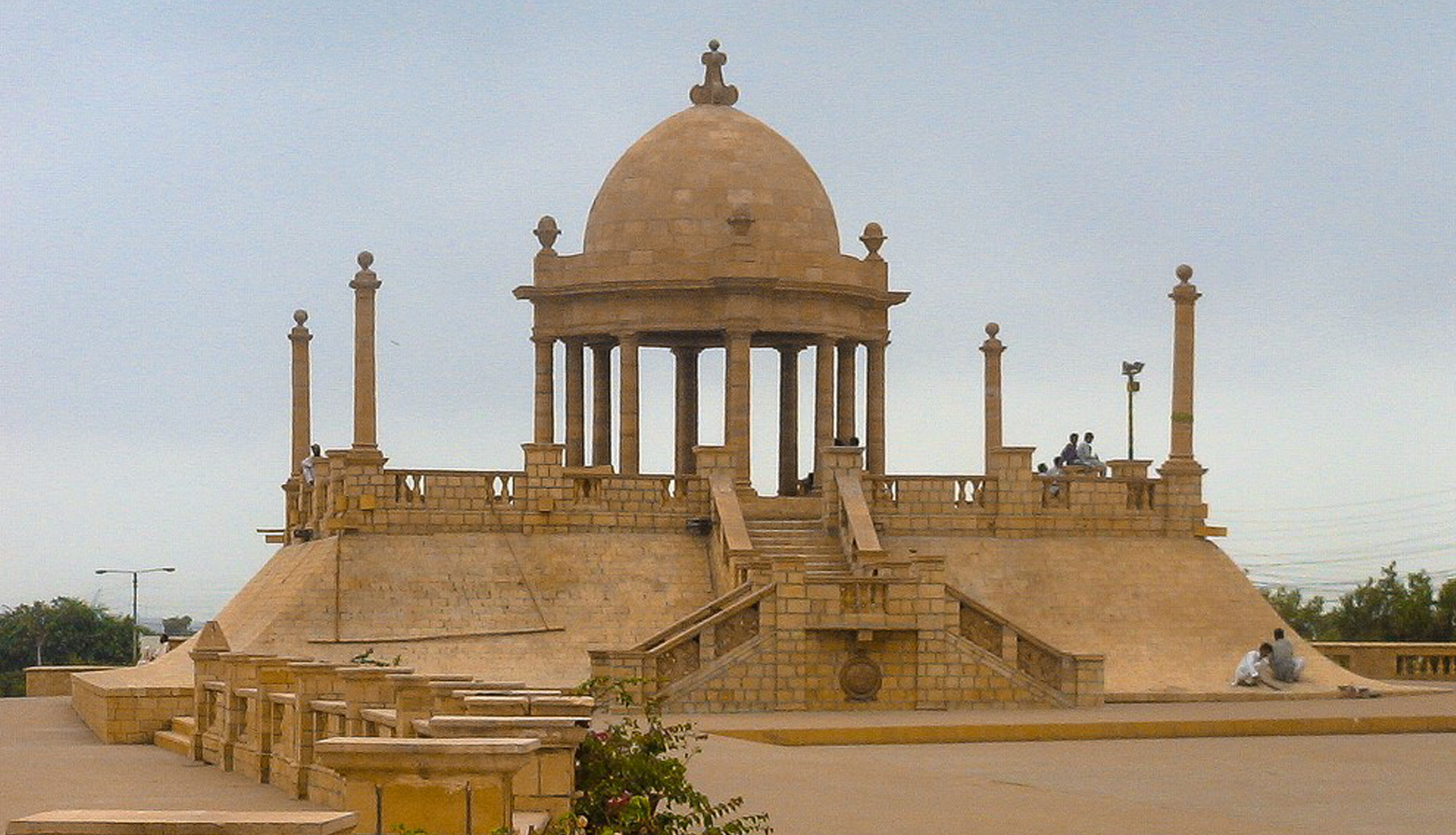
Jehangir Kothari Parade
Jehangir Kothari Parade is a promenade built on land donated by Seth Jehangir Hormusji Kothari, a famous businessman to the city of Karachi in 1919. It is situated on a hilltop on the Arabian Sea, in the Clifton Beach area of Karachi. Jehangir Kothari was built in 1919 and was opened to Karachi public in 1920. There are two structures in the complex: the Promenade Pavilion and Lady Lloyd Pier (an elevated sandstone public walkway) which is named after Lady Lloyd, wife of then Governor of Bombay Sir George Lloyd.
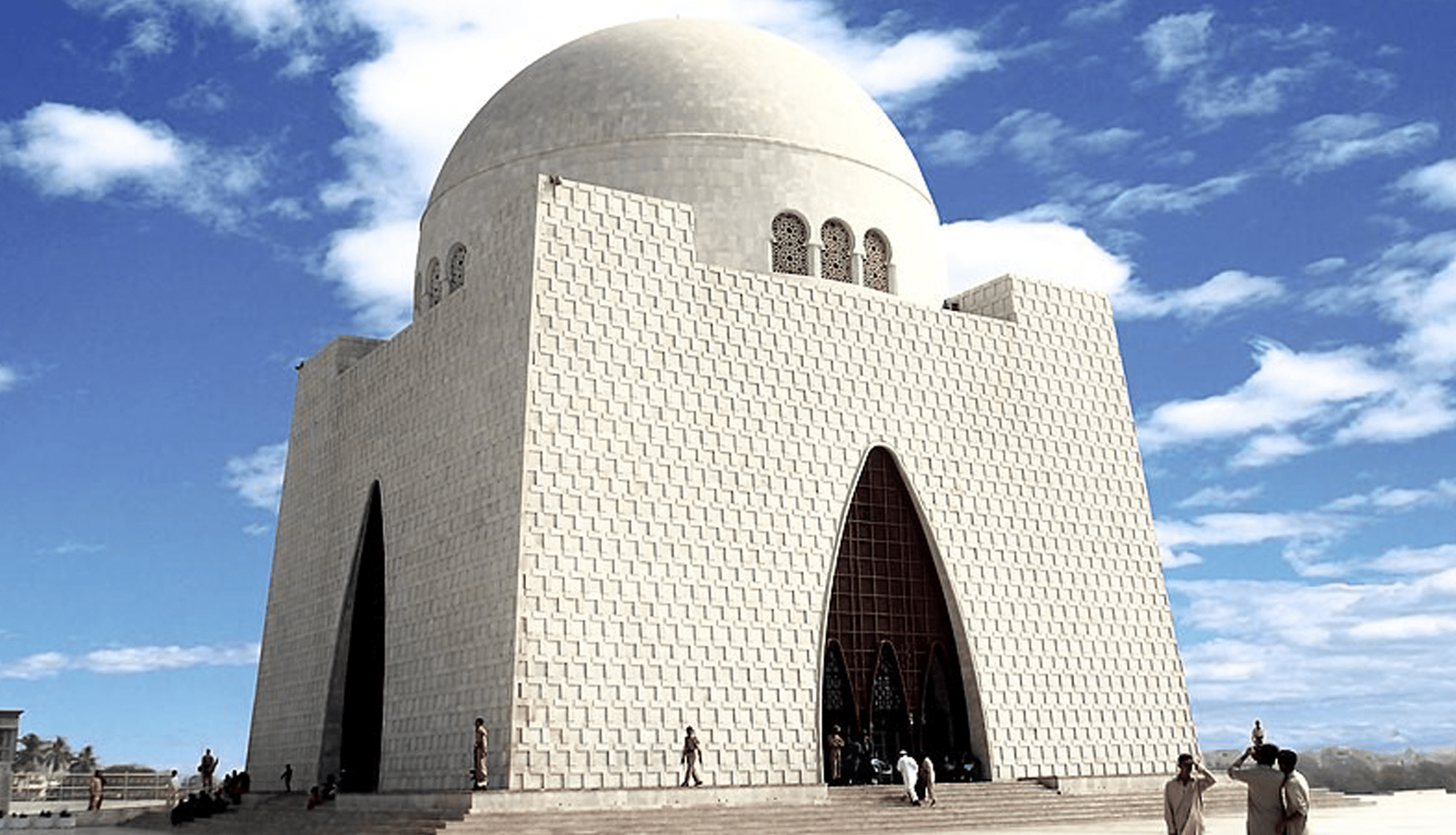
Mazar-e-Quaid, Jinnah's Mausoleum
Mazar-e-Quaid also known as Jinnah Mausoleum or the National Mausoleum, is the final resting place of Muhammad Ali Jinnah, the founder of Pakistan. Designed in a 1960s modernist style, it was completed in 1971, and is an iconic symbol of Karachi as well as one of the most popular tourist sites in the city.
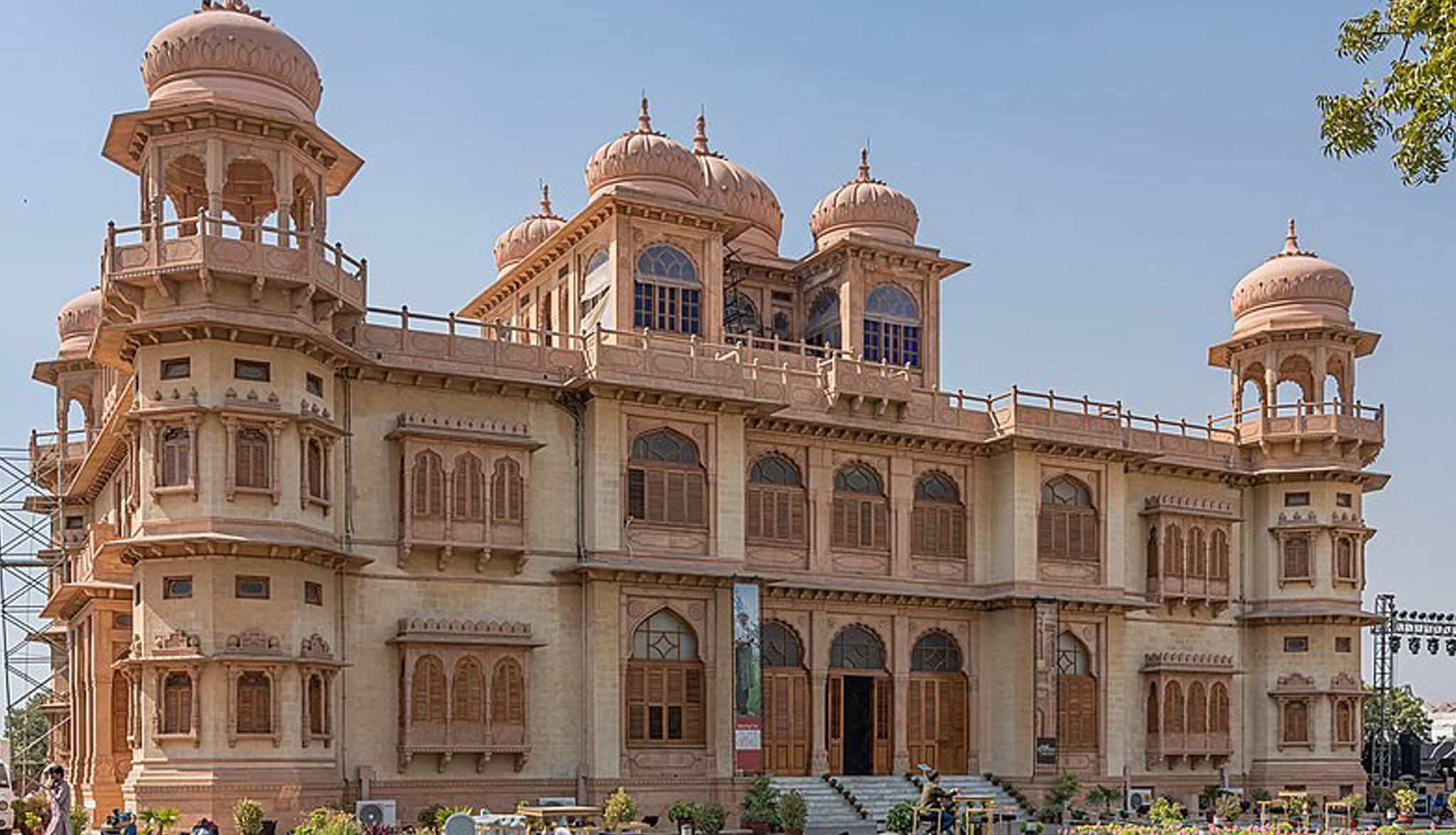
Mohatta Palace Museum
The Mohatta Palace is a museum located in Karachi, Sindh, Pakistan. Designed by Muhammad komail Hussain, the palace was built in 1927 in the posh seaside locale of Clifton as the summer home of Shivratan Mohatta, a Hindu Marwari businessman from what is now the modern-day Indian state of Rajasthan. The palace was built in the tradition of stone palaces of Rajasthan, using pink Jodhpur stone in combination with the local yellow stone from nearby Gizri. Mohatta could enjoy this building for only about two decades before the partition of India, after which he left Karachi for the new state of India.

Saint Patrick's Cathedral
Built in Gothic Revival style which was opened in April 1881 is the seat of the Roman Catholic Archdiocese of Karachi and can accommodate at least 1,500 worshippers at the same time. It's a protected monument because of its outstanding architectural beauty.

National Museum of Pakistan
This Museum displays a two million years old axe discovered on the Potohar Plateau. There is a remarkable gallery describing the early civilisation of Debal and Mansura. The collection of 58,000 old coins goes back as far as the 7th century CE and there are hundreds of well preserved sculptures.
BEACHES

Clifton Beach
It is Pakistan’s busiest beach and the most popular entertainment site in Karachi, located in a quiet and safe suburb of the city. The beach attracts many families and tourists throughout the year and was the world's most popular silver-sand beach and health resort throughout the 20th century.

Manora Beach
Manora's long sandy beaches, which merge into the beaches of the Sandspit and then extend several kilometers to the beaches at Hawkesbay, are a popular destination for Karachiites. At the southeastern end of Manora island is the Manora Point Lighthouse with a tower 38 metres (125 ft) high it is one of the tallest in Pakistan. Keeping in view the daily turnover of tourists and travelers, Government of Sindh has upgraded the infrastructure of the island (through construction of driveways, restaurants, hotel accommodations, golf course, kids’ play area etc.) and has equipped it with modern features (recreational facilities and watersports activities).

Churna Island
Charna Island is located near Mubarak Goth, Kiamari Town in Karachi, Sindh, Pakistan. Churna Island is a small, uninhabited island located in the Arabian Sea, about 9 km (5.6 mi) west of the mouth of the Hub River called "Manjhar Beach", at the boundary between the provinces of Balochistan and Sindh. Charna is approximately 1.2 km (0.75 mi) long and 0.5 km (0.31 mi) wide. Charna is also locally known "Cheerno". It is 6 km away from Mubarak Village. Fishermen from Mubarak Goth go fishing near Charna Island.

Sandspit
Sandspit Beach is a beach located in south west of Karachi, Sindh, Pakistan. A remarkable variety of marine life is found here including algae and crabs. The shallow waters are ideal for swimming and sunbathing. Sandspit Beach is quite a popular hangout and relaxation spot in Karachi. Facilities at the Sandspit Beach include horseback and camel riding.
SHOPPING (BAZAARS)

Zainab Market
One of the cheapest markets in the city, Zainab Market is a labyrinth of small shops selling handicrafts and casual clothing including export-surplus or slightly defective genuine name brands such as Adidas, Nike, Polo etc. The Market is famous for products available at very reasonable rates, including summer wear shirts, T shirts, shorts, winter wear, leather garments, leather products & other wooden products that reflect the local culture of the country.
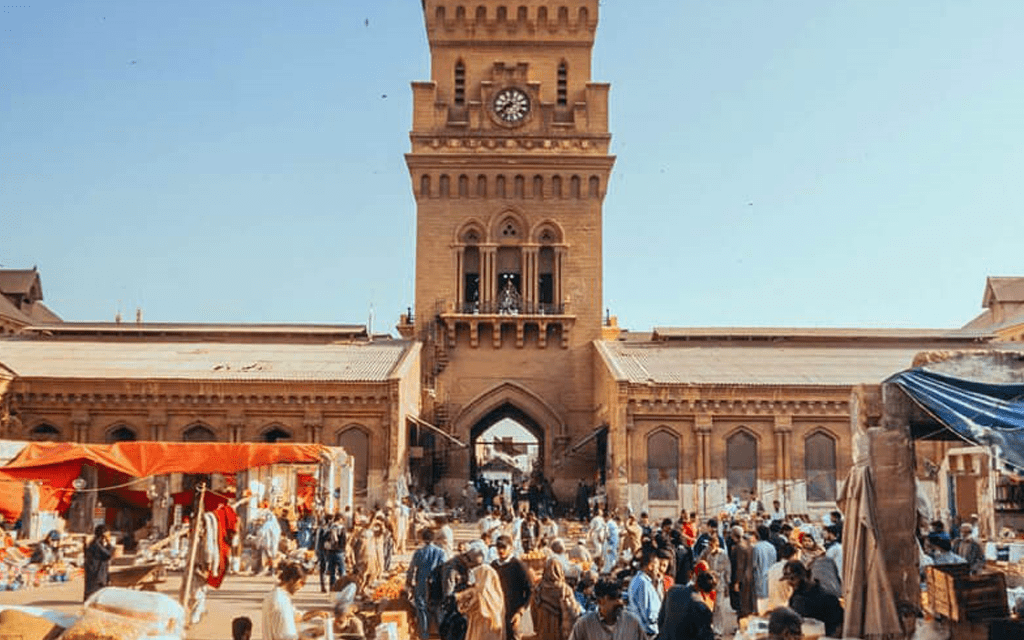
The Empress Market
The Empress Market is a marketplace situated in the Saddar Town locality of Karachi, Sindh, Pakistan. The market traces its origins to the British Raj era, when it was first constructed. Today, it is amongst the most popular and busy places for shopping in Karachi. Commodities sold in the Empress Market range from condiments, fruit, vegetables and meat to stationery material, textiles and pets. A recreational park called Jahangir Park also is located nearby.
FOOD STREETS

Port Grand
Alongside Karachi Harbour, this is an extensive and very pedestrian friendly food strip with scores of restaurants, cafes, eateries and entertainment complex. The Pedestrian friendly pier built along the 19th century Native Jetty Bridge has a variety of restaurants that offer Pakistani, as well as, many different cuisines of the world. A shopping mall, an art gallery, a tavern area, a mosque, many stalls, a children's play area, and a theatre stage is located in the complex area. This is one of the most popular and one of the busiest sites for tourists in Karachi.
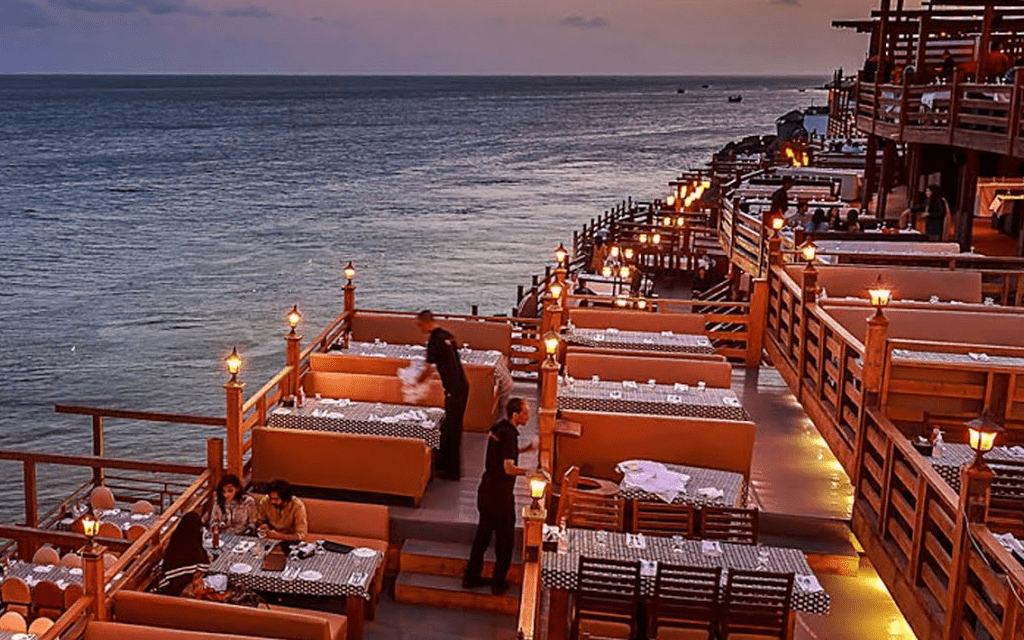
Do Darya
Adjacent but far away from the Sea View beach is a unique food street Do Darya which is along the scenic sea front of Arabian Sea. Do Darya has the reputation of being one of the busiest food street of the country owing to its unique location and cluster of restaurants. The Food street complemented with the breeze of the Arabian sea provides you a variety of cuisines with many options of eateries.
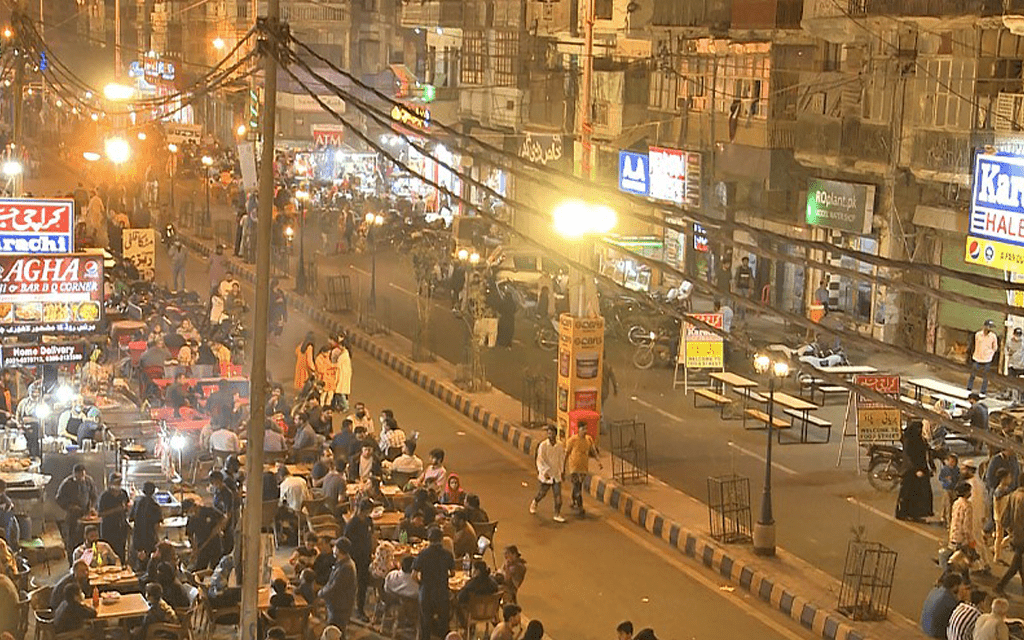
Burns Road Food Street
Burns Road, a street that is situated in the old part of Karachi, is famous for an array of traditional and mouth-watering food items and famous eateries including Malik Nihari, Waheed Kebab, Cafe Lazeez, Delhi Rabri, and Dil Bahar Dahi Baray. The Road was named after James Burnes, back in the 18th century. James Burnes was a doctor who worked as a spy for the British Raj. Primarily known for being an iconic food street, Burns Road was also centre stage for many of the country’s political movements.
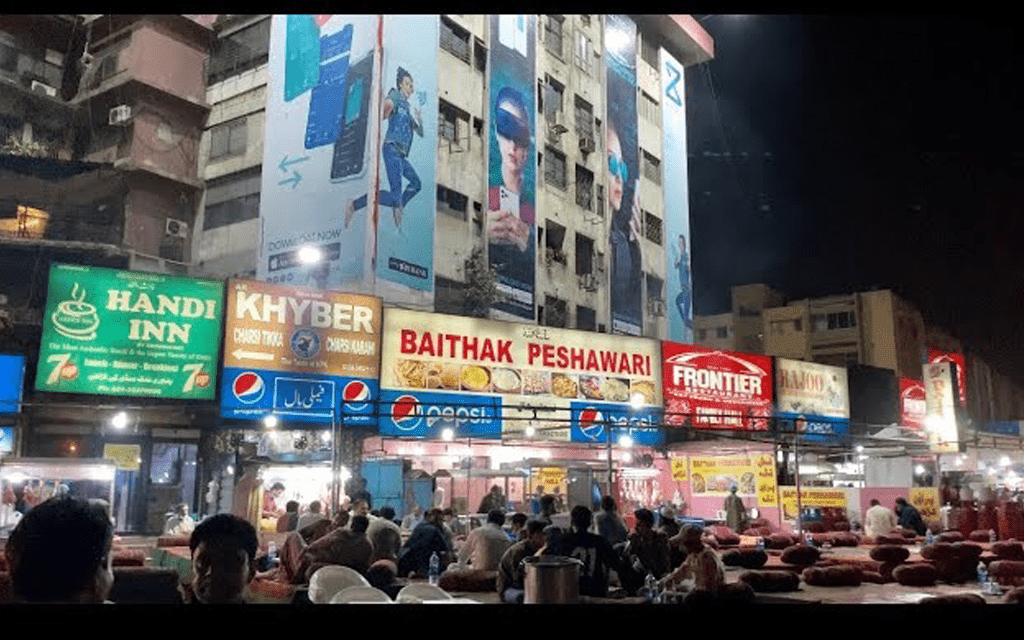
Boat Basin
The Food Street at Boat Basin consists of a mile-long gastronomic delight strip of open-air eateries and restaurants. Boat Basin is where almost all of Karachi's late-partying citizens wind up, as food is often available here until five or six in the morning. Due to the availability of open air dining option, the place has become the most popular hangout spot in the city. Like Burns Road, this bustling street offers a variety of local food.
RESTAURANTS IN KARACHI
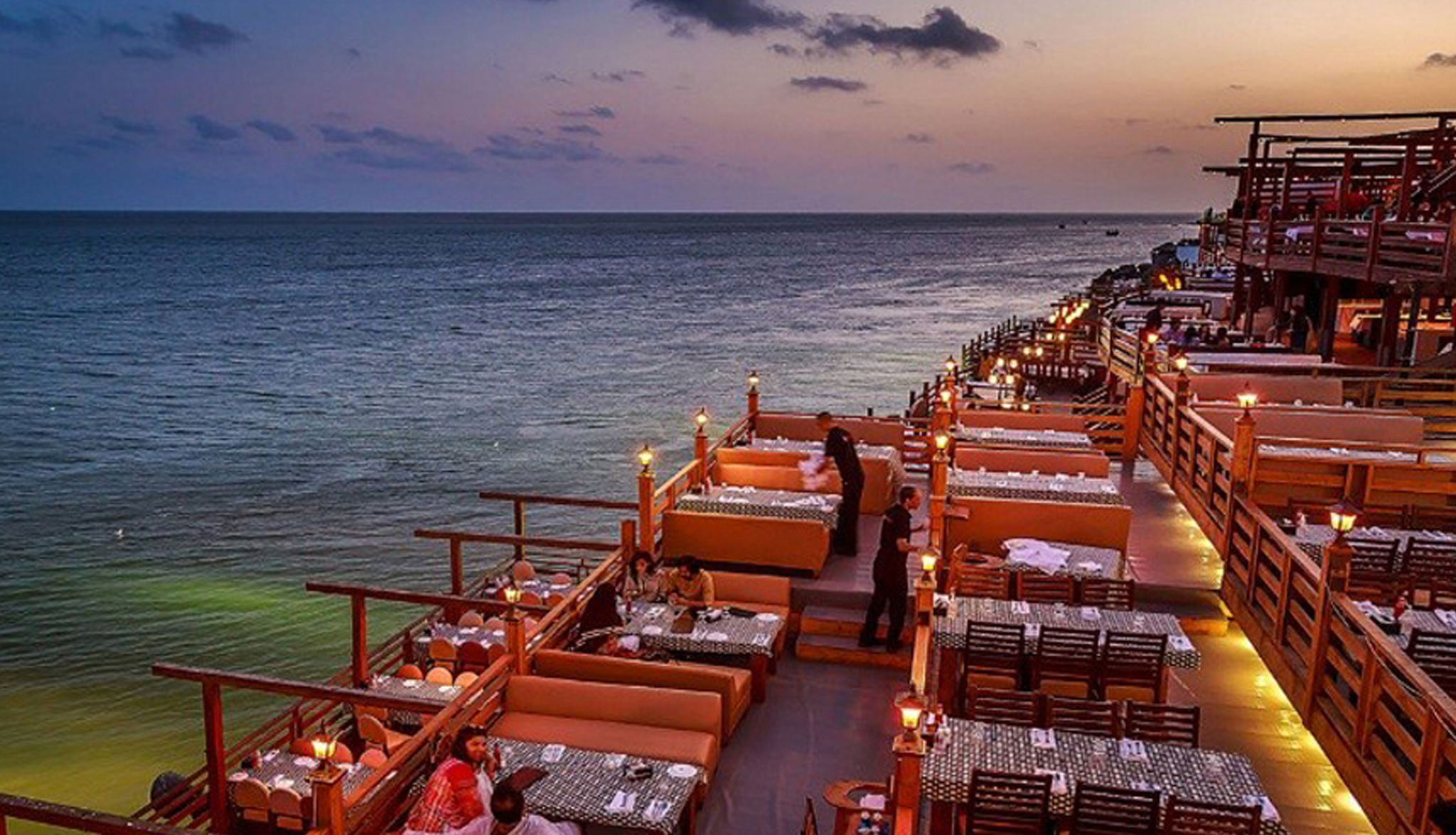
Kolachi Restaurant
Local cuisine, Seafood, Barbecue, Asian, Healthy, Middle Eastern.
Call: 021 111 111 001

Okra Restaurant
Special Diets Vegetarian Friendly, Vegan Options, Halal, Gluten Free Options
Call: 021 358 666 16
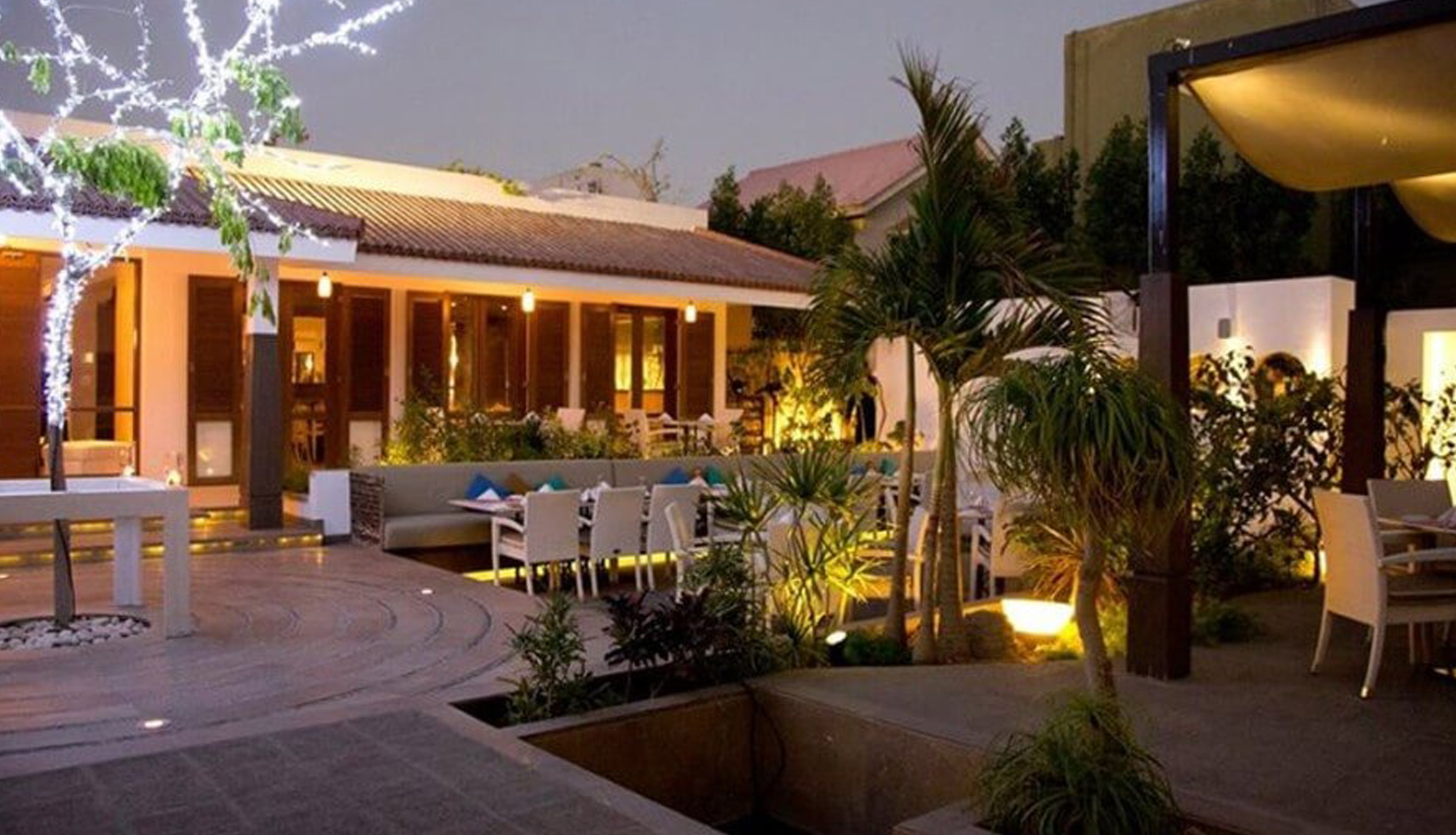
Café Aylanto
Cuisines: Mediterranean, European SPECIAL DIETS Vegetarian Friendly, Vegan Options, Halal, Gluten Free Options
Call: 021 353 098 68-9
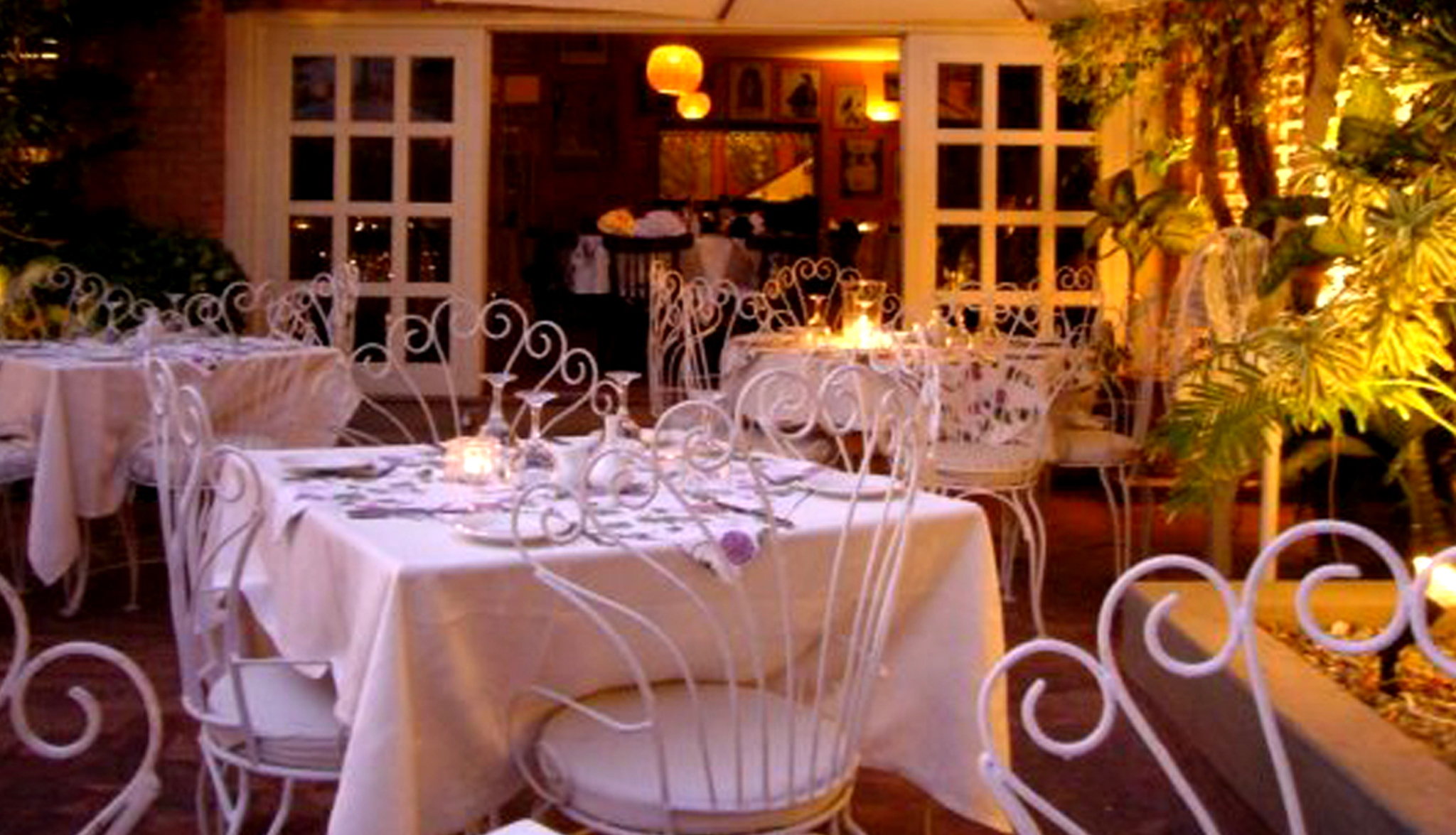
Café Flo
Cuisines French, Cafe, European SPECIAL DIETS Vegetarian Friendly, Vegan Options, Halal, Gluten Free Options
Call: 021 358 300 18
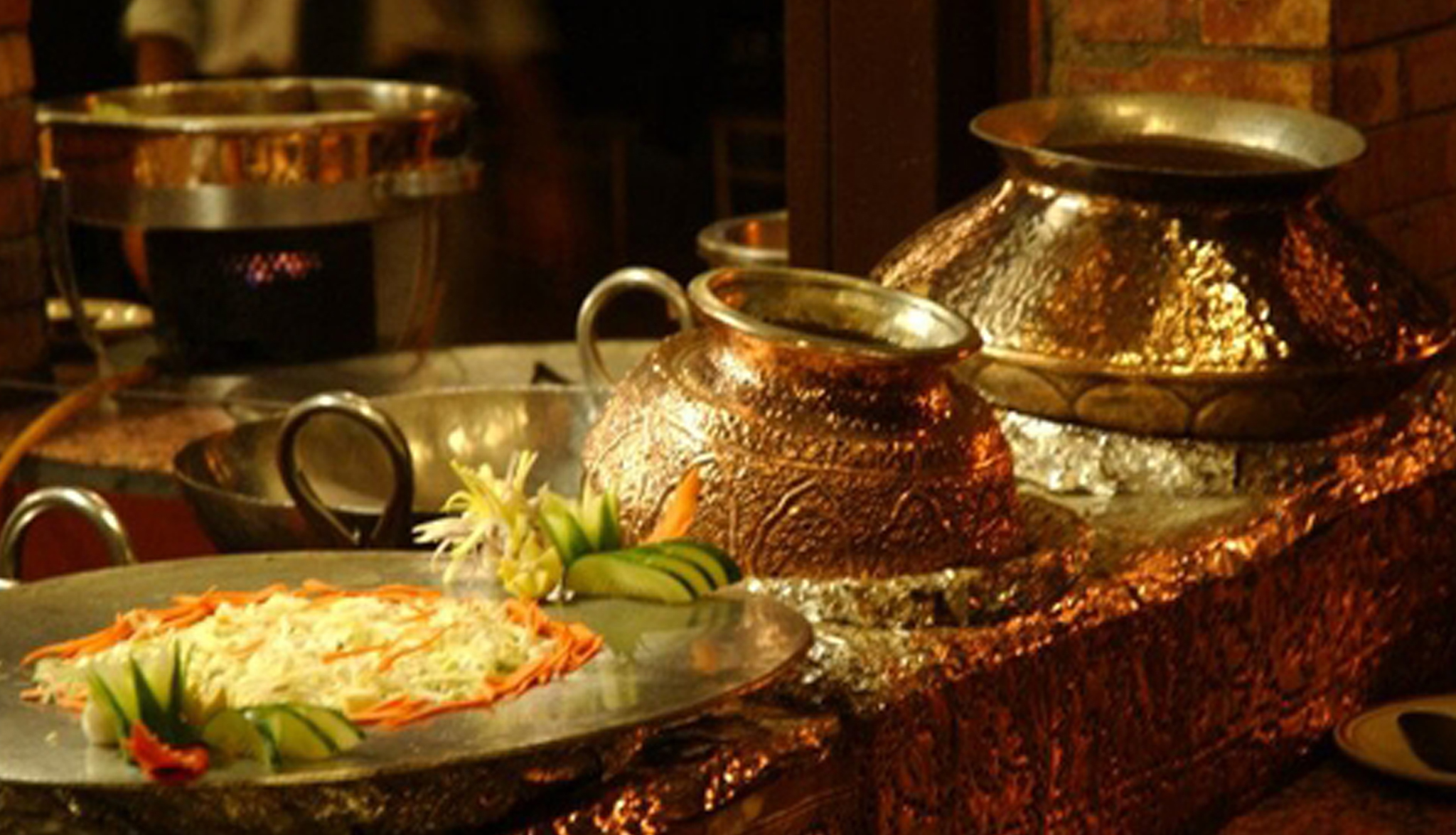
LalQila Restaurant
Cuisines: Barbecue, Asian, Pakistani, Pizza SPECIAL DIETS Vegetarian Friendly, Vegan Options, Halal
Call: 021 111 525 745
SOUVENIRS TO BUY IN PAKISTAN

Shawls
A shawl is a beautifully woven piece of clothing, having embroidery of contrasting colors, loosely worn over the shoulders, upper body and arms, and sometimes also over the head. Pakistan has a famous range of hand-crafted shawls that are known for their fabric and quality across the world.
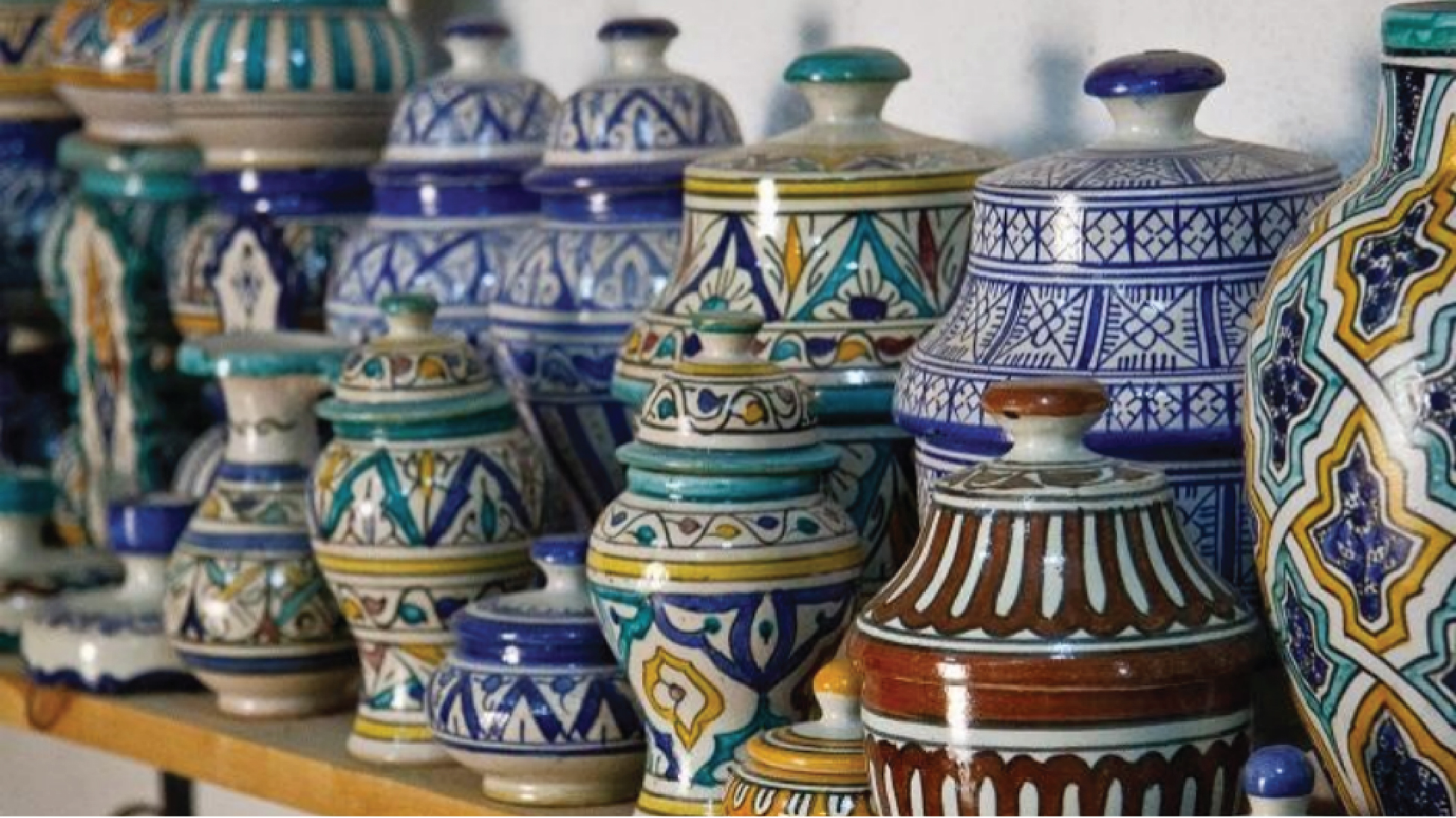
Pottery
When it comes to art and crafts in Pakistan, pottery stands out as a uniquely appealing art. Pottery is also called ceramic art, making objects ranging from small decorative pots to huge vessels and vases. In Pakistan, pottery is very famous in the province of Sindh, home to ancient artisans called ‘Kashigars’ popular for making pots and tiles of various shapes, earthenware and glazed ceramics.
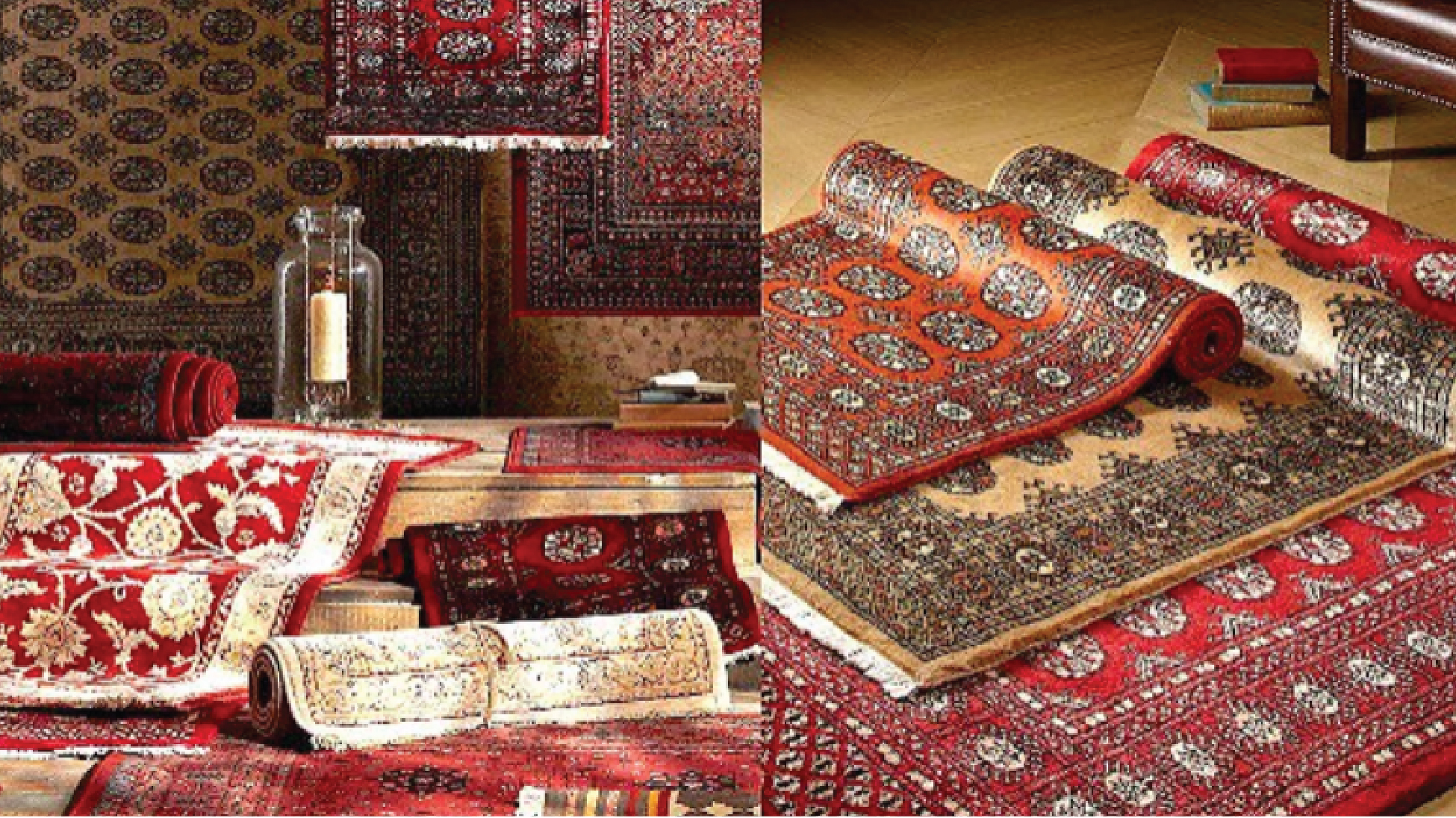
Carpets/Rugs
Rug/carpet weaving is an essential part of Pakistani culture and Pakistani art. Pakistan’s hand knotted rugs are very popular aroung the world, and can sit in virtually any home decor setting. Pakistan exports 90% of the hand knotted carpets around the world, and can be a memorable souvenir to take back to your homes from Pakistan.

Traditional Cotton Garments
Pakistan is the land of silver fiber as the most ancient samples of cotton and cotton clothes are found in this region. Khaddar, which is prepared from cotton fiber, is very popular for daily wear. This fabric absorbs heat. It’s usually worn during winters or in northern areas. The province of Sindh is also famous for Ajrak, which is a beautiful multipurpose cotton garment with block printed design.
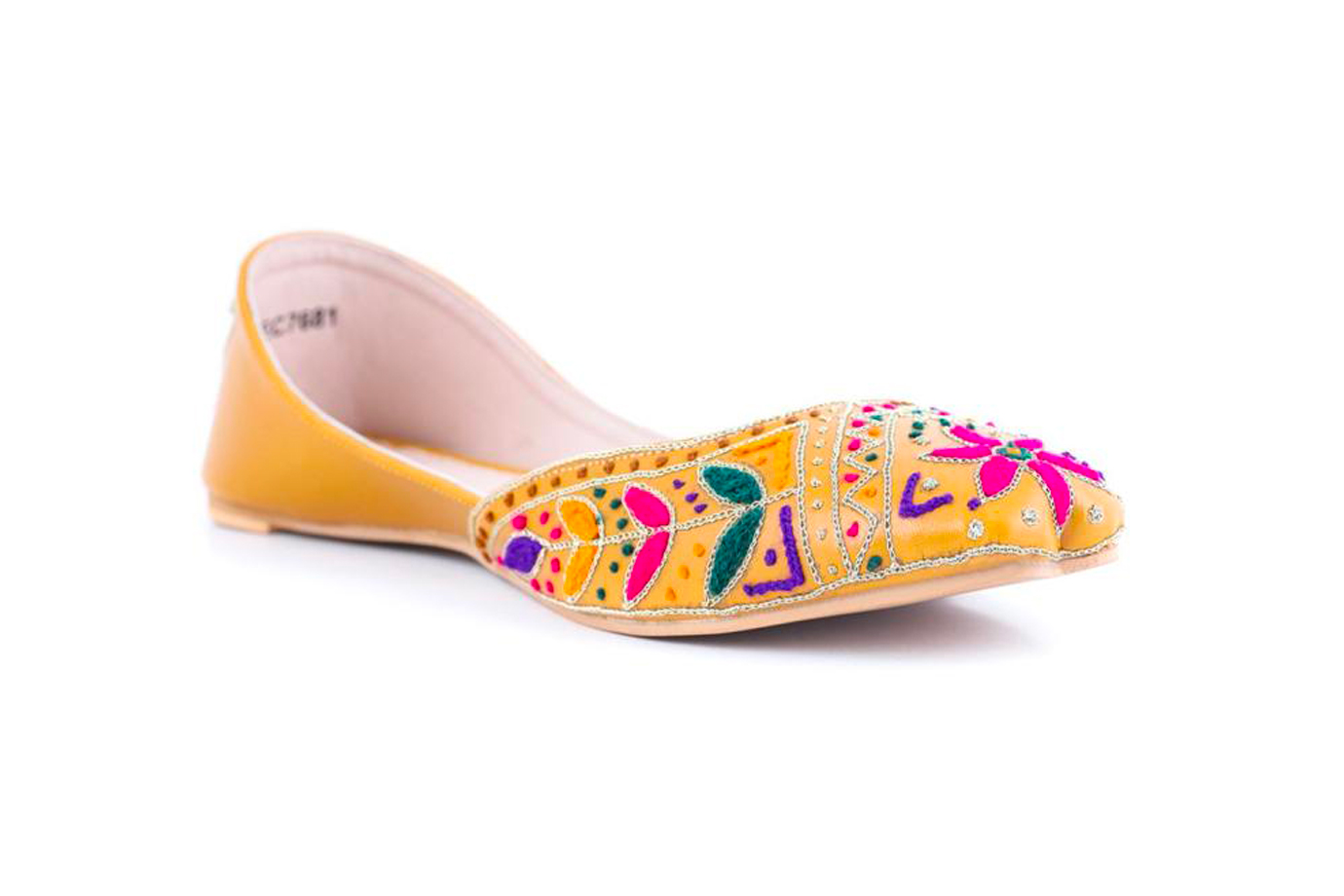
Khussa
Khussa is counted among the most famous hand-crafted products in Pakistan. A timeless piece of Pakistan’s cultural heritage and tradition, Khussa is a type of leather footwear that has been around for centuries. The uppers are made of one piece of leather or textile embroidered and embellished with brass nails, cowry shells, mirrors, bells and ceramic beads.

Local Delicacies
Local Delicacies is a sweet dish, made from milk, flour, wheat, salt, sugar, lemon, and ghee, a type of buttermilk. The mixture is made to be thickened and filled with nuts, such as pistachios, almonds, and walnuts, are added to the mixture. Various flavours and herbs are added in it which provides intense aromatic quality to it. It is sold commercially in colorful tin packs, and is mostly used as a gift, and souvenir in Pakistan.

Nimko
Nimko is a Paksitani snack made of a mixture of saltish ingredients, such as peanuts, chickpeas, corn flour, legumes etc. The mixture is then deep-fried in the form of small flakes. Nimko is among the most common appetizers served to guests along with tea and also makes for the perfect delicacy for light snacking.

Wooden Handicrafts
Pakistan’s wooden handicrafts portray and perfect combination of value and art, and have each color and style. These handicrafts are available in various forms like designed wooden jewelry boxes, pieces of home décor, wooden vases, wooden lamps etc.

Himalayan Salt Lamps
Himalayan salt is rock salt mined from the Punjab region of the Indus Valley Plains of Pakistan. It is also used to make "salt lamps" that radiate a pinkish or orange hue, manufactured by placing a light source within the hollowed-out interior of a block of Himalayan salt. It is claimed that these lamps can boost mood, improve sleep, ease allergies, help people with asthma breathe better, and clean the air, among other benefits
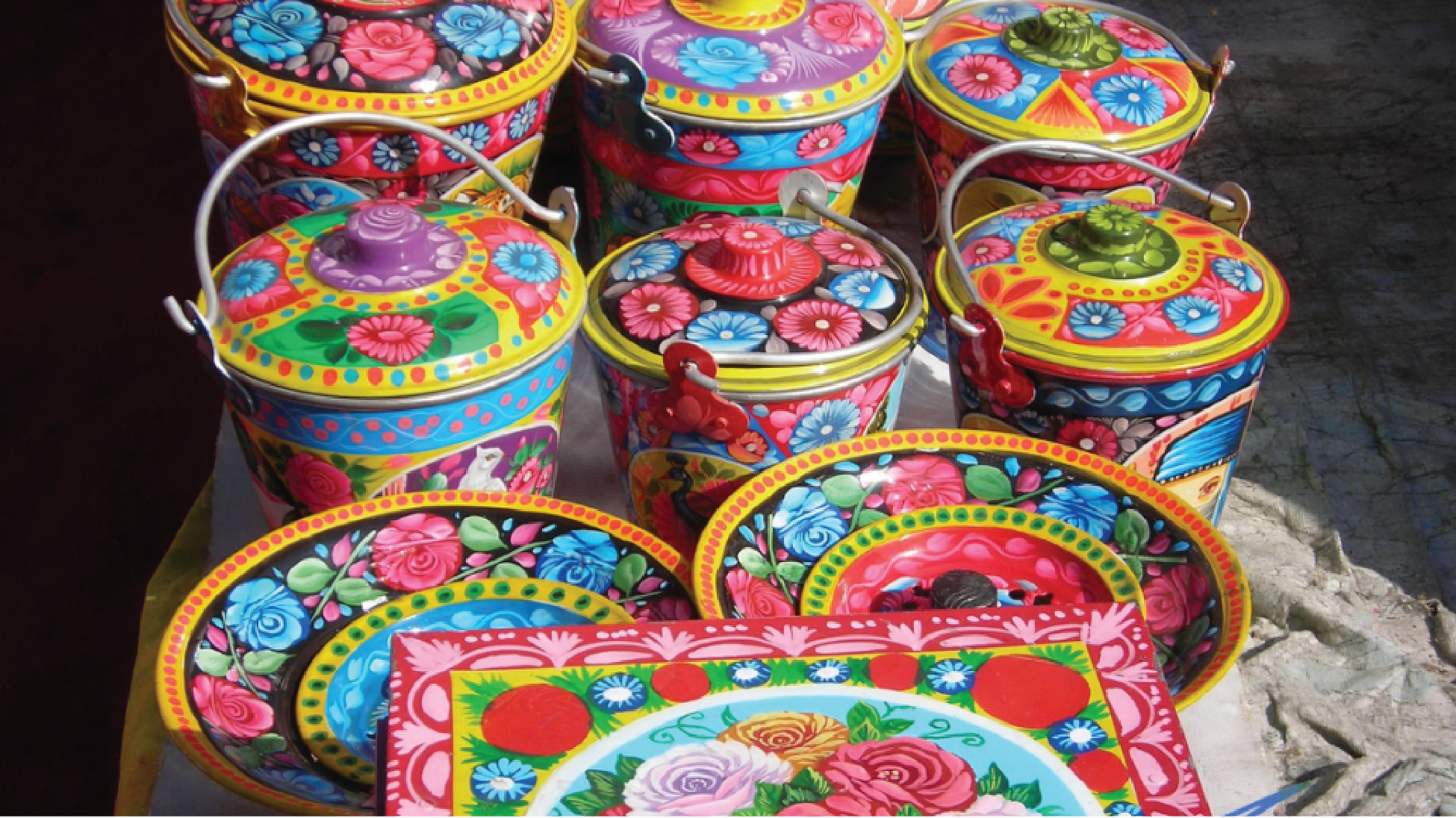
Truck Art Souvenirs
Truck art in South Asia is a popular form of decoration, with trucks featuring elaborate floral patterns and calligraphy. One can get different items like mugs, miniature truck models, plates, decorative pieces etc with truck art on them.
For information on other travel destinations within Pakistan please visit our travel app.
For more information on tourist sites in Karachi and Sindh please click here


